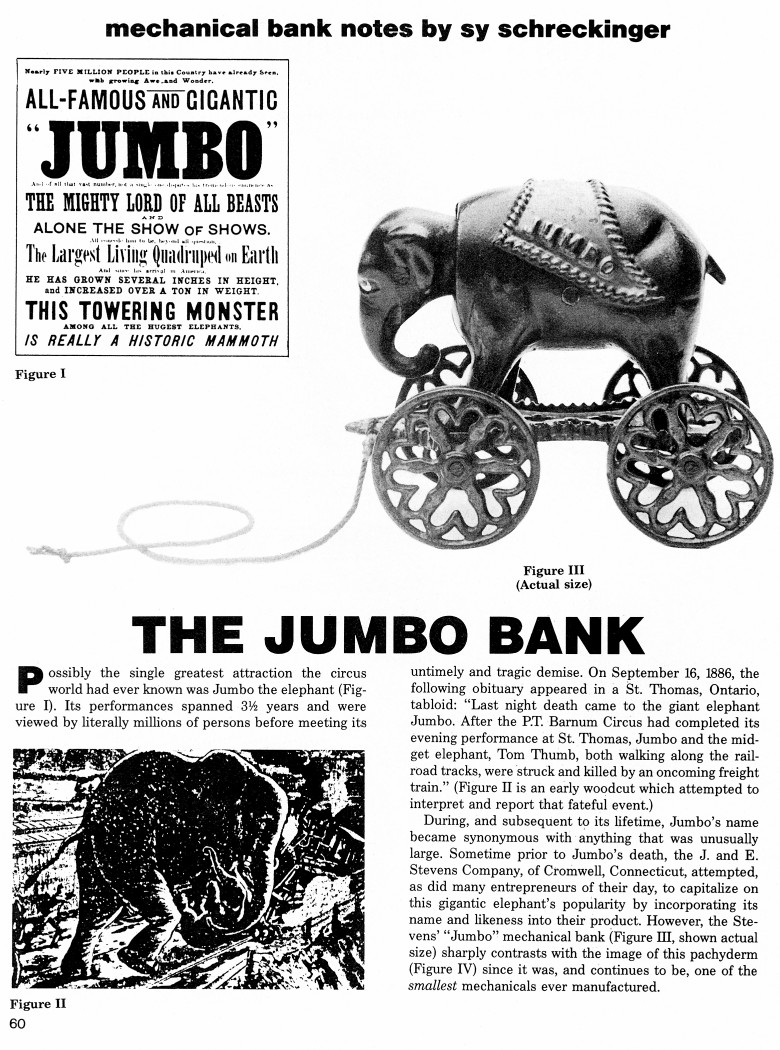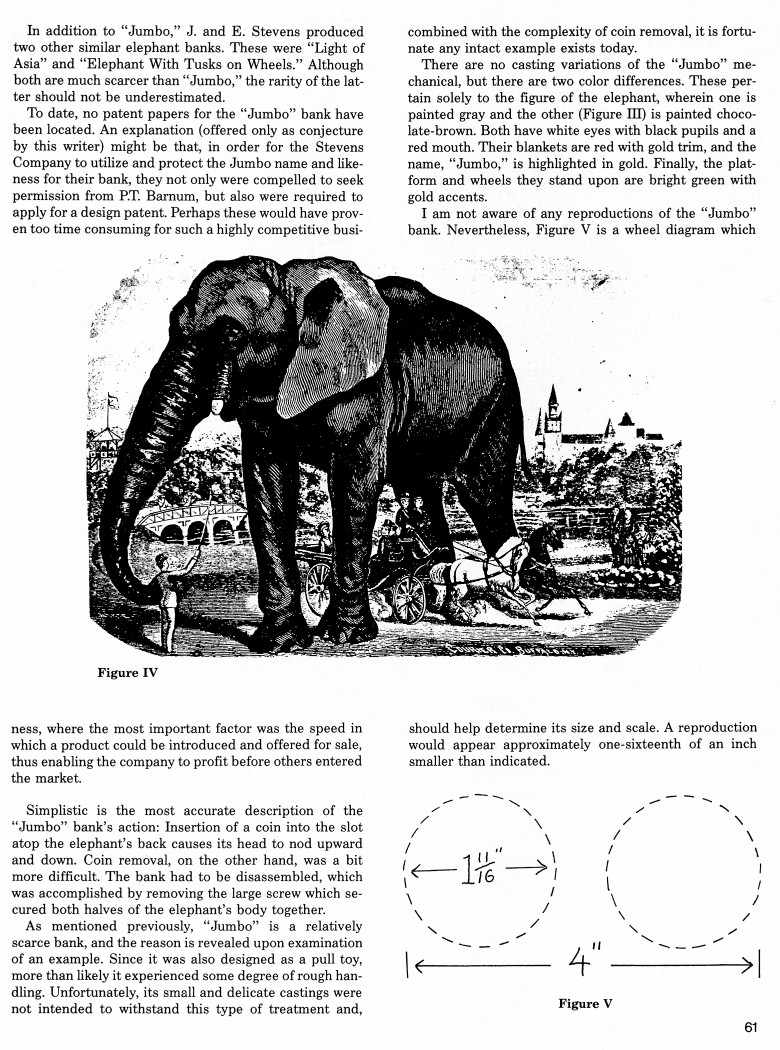|
The Jumbo Bank
by Sy Schreckinger – ANTIQUE TOY WORLD Magazine – December,
1987
Possibly the single
greatest attraction the circus world had ever known was Jumbo the elephant
(Figure I). Its performances spanned 3-1/2 years and were viewed by
literally millions of persons before meeting its untimely and tragic
demise. On September 16, 1886, the following obituary appeared in a St.
Thomas, Ontario, tabloid: "Last night death came to the giant elephant
Jumbo. After the P. T. Barnum Circus had completed its evening performance
at St. Thomas, Jumbo and the midget elephant, Tom Thumb, both walking
along the railroad tracks, were struck and killed by an oncoming freight
train." (Figure II is an early woodcut which attempted to interpret and
report that fateful event.)
During, and subsequent to its lifetime, Jumbo's name became
synonymous with anything that was unusually large. Sometime prior to
Jumbo's death, the J. and E. Stevens Company, of Cromwell, Connecticut,
attempted, as did many entrepreneurs of their day, to capitalize on this
gigantic elephant's popularity by incorporating its name and likeness into
their product. However, the Stevens' "Jumbo" mechanical bank (Figure III,
shown actual size) sharply contrasts with the image of this pachyderm
(Figure IV) since it was, and continues to be, one of the smallest
mechanicals ever manufactured.
In addition to "Jumbo," J. and E. Stevens produced two other similar
elephant banks. These were "Light of Asia" and "Elephant With Tusks on
Wheels." Although both are much scarcer than "Jumbo," the rarity of the
latter should not be underestimated.
To date, no patent papers for the "Jumbo" bank have been located. An
explanation (offered only as conjecture by this writer) might be that, in
order for the Stevens Company to utilize and protect the Jumbo name and
likeness for their bank, they not only were compelled to seek permission
from P. T. Barnum, but also were required to apply for a design patent.
Perhaps these would have proven too time consuming for such a highly
competitive business, where the most important factor was the speed in
which a product could be introduced and offered for sale, thus enabling
the company to profit before others entered the market.
Simplistic is the most accurate description of the "Jumbo" bank's action:
Insertion of a coin into the slot atop the elephant's back causes its head
to nod upward and down. Coin removal, on the other hand, was a bit more
difficult. The bank had to be disassembled, which was accomplished by
removing the large screw which secured both halves of the elephant's body
together.
As mentioned previously, "Jumbo" is a relatively scarce bank, and the
reason is revealed upon examination of an example. Since it was also
designed as a pull toy, more than likely it experienced some degree of
rough handling. Unfortunately, its small and delicate castings were not
intended to withstand this type of treatment and, combined with the
complexity of coin removal, it is fortunate any intact example exists
today.
There are no casting variations of the "Jumbo" mechanical, but there
are two color differences. These pertain solely to the figure of the
elephant, wherein one is painted gray and the other (Figure III) is
painted chocolate-brown. Both have white eyes with black pupils and a red
mouth. Their blankets are red with gold trim, and the name, "Jumbo," is
highlighted in gold. Finally, the platform and wheels they stand upon are
bright green with gold accents.
I am not aware of any reproductions of the "Jumbo" bank.
Nevertheless, Figure V is a wheel diagram which should help determine its
size and scale. A reproduction would appear approximately one-sixteenth of
an inch smaller than indicated.
Correction: (from
November, 1991) It was erroneously stated in the
December 1987 Antique
Toy World article, "The Jumbo Bank," that the J. and E. Stevens Co. also
manufactured the "Elephant with Tusks on Wheels" bank. Discovery of new
evidence indicates the likelihood of Kyser and Rex Co. of Frankford, PA,
as its manufacturer. Further elaboration will be contained within a future
article in this magazine.
|


